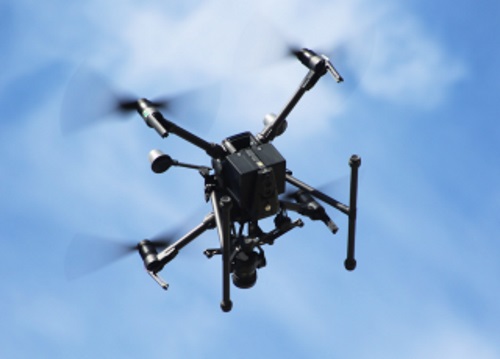The American Association of State Highway and Transportation Officials issued a joint letter with four other organizations that criticized the U.S. Department of Transportation and Federal Aviation Administration for developing new rules regarding drone operations without the input of state and local governments.
[Above photo by Caltrans.]
The November 25 letter expressed “significant concerns” with the lack of outreach and formal consultations regarding a forthcoming “unified legal position” regarding the operation of unmanned aerial systems or UAS – commonly called drones – by the agency’s Joint Lawyers Working Group on Federal Preemption and the Regulation of UAS.

Signed by AASHTO, the National Conference of State Legislatures, National Association of Counties, U.S. Conference of Mayors, and National League of Cities, the letter said the federal government should be “deferential” when taking action that affects the policymaking discretion of state and local governments.
“In fact, federal preemption poses risks to innovation and economic development by preventing new technologies from achieving scale,” the letter added. “Further, state and local governments play a key role in the governance of these devices and, as such, should be participants in the decision-making regarding how these devices will be used and managed in our communities.”

The five organizations also stressed they are raising these concerns especially “in light of how well our members have worked with your agency in the successful implementation of the USDOT’s UAS Integration Pilot Program.”
State departments of transportation in particular continue to play a key role within the USDOT’s effort to develop drone technology and the policies governing their operation.
In November, the USDOT launched a new drone research initiative dubbed the BEYOND program that will build upon that agency’s aforementioned three-year UAS Integration Pilot Program, which wrapped up on Oct. 25.
USDOT said eight of the nine state, local, and tribal governments that participated in its UAS pilot program – including three state DOTs – signed new agreements with the FAA to continue tackling drone integration challenges as part of the BEYOND initiative.
AASHTO noted in a 2019 survey that 36 out of 50 state DOTs or 72 percent are funding centers or programs to operate drones, up from 20 out of 44 state DOTs or 45 percent in AASHTO’s 2018 survey.
That is why the joint letter stressed it is “imperative” that federal, state, and local governments “work in close coordination” going forward where the development of drone regulations is concerned.
“We strongly believe that state and local involvement in planning and implementing will not only bring about greater economic benefits for the country but will also ensure that benefits arrive sooner,” the groups said in their letter.
“However, we remain concerned that the department [USDOT] would issue a legal opinion of major significance and request that your agency formally engage in a public rulemaking with the appropriate notice and comment opportunities,” they said.
 Top Stories
Top Stories


